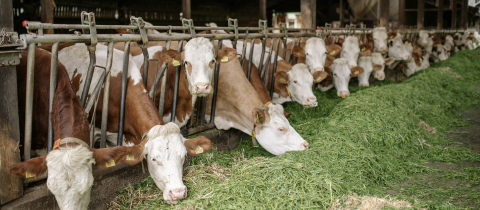We have been inundated with discussions of viruses but there are other types of microbes out there as well. Fungi, algae, protozoa and of course, bacteria. The latter are not only out there, but inside us as well. We share our body with bacteria. They live in our mouth, on our skin and mostly in our digestive tract. There are up to a thousand different varieties, and their total number, some 100 trillion, is many times greater than the total number of human cells in the body. Luckily, bacterial cells are much smaller than human cells. Their total weight is only about three pounds, which is we don’t look like bacteria.
We have known since the groundbreaking work of Louis Pasteur and Robert Koch that bacteria can cause disease. Koch’s elegant experiment demonstrating that bacteria cultured from a tuberculosis patient were capable of causing the disease in a mouse cemented the bacterial theory of disease and launched the quest for antibiotics. Nobody back then was concerned about disrupting the body’s natural bacterial flora with antibiotics, the prime goal was to treat bacterial diseases. Now we know that the bacteria that inhabit our body are not just bystanders watching our internal activities. They are an integral part of those activities.
Who could have ever guessed that whether a baby is delivered vaginally or via C-section can have an effect on weight decades later? Yet that appears to be the case. A review of fifteen studies that examined over 160,000 births revealed that babies born by Caesarian section were 26% more likely to be overweight and 22% more likely to be obese as adults. The theory is that babies born by C-section pick up bacteria from the mother’s skin inside the vaginal tract and that this bacterial population is more efficient at extracting calories from food. That notion is backed by the well-known increase in weight by farm animals treated with antibiotics. The drugs eliminate the bacteria that are less efficient in breaking down food into absorbable components.
It is not only weight that may be affected by bacteria. Some researchers link Crohn’s disease, celiac disease and arthritis to a disturbance of bacterial population in the gut, possibly by antibiotics. The average North American child has three courses of antibiotics in the first two years of life which may cause a permanent shift in the body’s microbial environment. Exactly how bacteria affect health is not clear, but the bacteria’s own digestive process produces a variety of metabolites that enter the bloodstream and may have an effect on the biochemistry that underlies everything from the control of blood sugar to the control of mood. Even autism may have a connection to the bacterial population in our gut. At least that seems to be the case if we go by some interesting experiments carried out in mice.
It turns out that injecting pregnant mice with a virus causes immune activity that can lead to autism-like behaviour in their pups. The newborns obsessively groom themselves and become disinterested in other mice. What causes autistic behaviour in the mice pups? It seems they suffer from “leaky gut syndrome,” a condition in which molecules produced by gut bacteria can seep into the bloodstream and conceivably reach the brain. It is interesting to note that there is also an increased risk of autism in children born to women who had a severe infection, like the flu, while pregnant and that autistic children commonly suffer from gastrointestinal problems, including leaky gut syndrome.
Now for the really interesting finding. Not only did the mice pups suffer from leaky gut syndrome, but they also had a different bacterial population in their gut than other mice. It seems that maternal infection can alter the microbiome in the offspring. Furthermore, 4-ethylphenylsulphate, a chemical that can affect behaviour, was found in higher levels in the autistic mice, possibly generated by a species of bacteria that were present in higher concentrations than normal. This chemical is similar to para-cresol, which has been detected in the urine of people with autism.
In order to try to rebalance the bacterial population, the researchers treated their animals with a strain of bacteria known as Bacteroides fragilis that had previously been shown to protect mice from gut inflammation, hoping these bacteria would crowd out the culprits that were causing the leaky gut. That is just what appears to have happened. The blood levels of 4-ethylphenylsulphate dropped, and the mice stopped some, but not all, of their autistic-like behaviour. They stopped obsessively burying marbles in their cages but they were still uninterested when new mice were introduced. Certainly, this study does not mean that autism in people can be treated with Bacteroides fragilis, but it does introduce the possibility that treatment with beneficial bacteria, in other words, probiotics, may have a role. Of course, as always, we have to remember that mice are not people.







